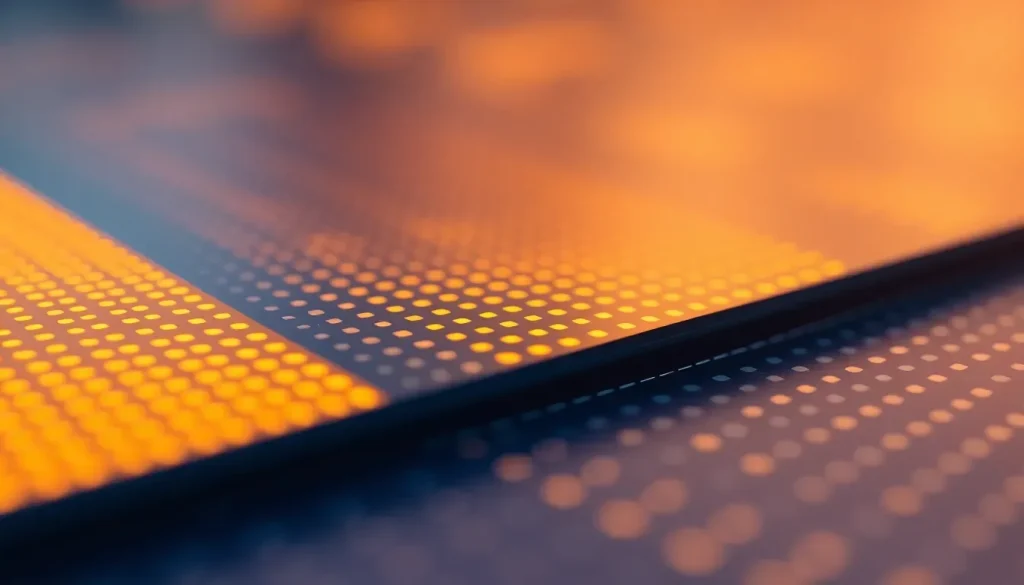Imec leads Europe in GaN development on 300 mm wafers for future chips

In an era where energy efficiency and performance are paramount, Imec is making significant strides in power electronics with its new development program focused on Gallium Nitride (GaN) on 300 mm wafers. This initiative is not only set to reduce costs in Europe and the USA but also aims to initiate a new phase in miniaturization and efficiency of power devices that will power everything from processors to data centers for Artificial Intelligence. As we venture into a new technological revolution, Imec once again positions itself at the forefront of semiconductor advancements.
The announcement, which comes with the collaboration of strategic partners such as AIXTRON, GlobalFoundries, KLA Corporation, Synopsys, and Veeco, underscores the industry's readiness to move beyond the 200 mm standard and establish a comprehensive ecosystem around Gallium Nitride. This new material holds great promise at larger sizes, suggesting that Europe and the USA are intent on gaining a competitive edge over Asia in this crucial sector.
Imec leads the development of GaN on 300 mm wafers for Europe and the USA: Is Asia falling behind?
For those who may not be familiar with the context, Imec is one of the leading research centers in microelectronics worldwide, headquartered in Belgium. Interestingly, its most advanced R&D center is located in Malaga, Spain, where cutting-edge technology research takes place.
Imec's mission is to develop advanced technologies that are then utilized by major chip and semiconductor companies like Intel, TSMC, and ASML to create everything from lithographic scanners to CPU nodes. They are at the heart of a technological chain that stands as one of the most advanced in any field globally.
Imec's research focuses on finding new ways to manufacture electronic components that are more powerful, smaller, and more efficient before they hit the market. For instance, they have recently explored how transistors will evolve in terms of technology, size, efficiency, and construction methodology.
The current announcement centers around a technology known as GaN, which stands for Gallium Nitride. This material is emerging as the successor to silicon, which has been the foundational component of nearly all current chips. The key advantage of GaN is its ability to manufacture transistors and power devices that can handle more energy with less heat loss.
Until now, most industrial GaN capabilities have remained within the 200 mm wafer standard. However, Imec has been laying the groundwork to make the leap to 300 mm. Initial results with 300 mm wafers have shown mechanical stability and curvature control, two critical factors before scaling up to mass production.
By the end of 2025, the research center anticipates having its “White Room” fully equipped for this wafer size, paving the way for the new chips of the future, where not only better performance is expected, but also lower costs per chip.
The evolution of transistors: Aiming for the CPUs and GPUs of the future
The immediate technical goal is to create a foundational platform based on lateral p-GaN HEMT technology targeted at low voltage applications, starting from 100V and above, using 300 mm silicon substrates (type 111). Concurrently, critical processes such as p-GaN etching and ohmic contact formation are being developed. The second phase of the program will focus on high-voltage devices exceeding 650V, built on QST substrates compatible with CMOS, featuring a polycrystalline aluminum nitride core.
According to Stefaan Decoutere, the head of the GaN program at Imec, the benefits of transitioning to 300 mm go beyond merely producing more chips per wafer. He states:
“Access to state-of-the-art CMOS equipment will enable us to develop more advanced power transistors, such as p-GaN HEMTs with low voltage and aggressive scaling, ideal for point-of-load converters that optimize energy distribution for CPUs and GPUs.”
Imec asserts that this evolution is supported by the maturity that GaN has achieved in recent years due to more stable epitaxial growth, improved reliability, and more robust integration processes. Compared to silicon, GaN transistors offer less size, greater efficiency, and higher power density—essential factors in an era of global electrification and decarbonization.
This initiative, in terms of planning and execution, enhances Europe’s position in a critical technology for energy transition and high-performance computing. If the leap from 200 mm to 300 mm solidifies, GaN could definitively establish itself as the natural successor to silicon in electronics, transforming everything from transistors to the very way they are created, including server and desktop CPUs or GPUs.
The strategic partners propelling Imec's GaN initiative
The collaboration with leading companies is essential for the success of this ambitious project. The involvement of partners such as:
- AIXTRON: Specializes in deposition equipment for compound semiconductors.
- GlobalFoundries: A major semiconductor manufacturer with extensive experience in wafer fabrication.
- KLA Corporation: Known for its process control and yield management solutions.
- Synopsys: A leader in software solutions for semiconductor design.
- Veeco: Provides atomic layer deposition and molecular beam epitaxy systems.
These partnerships are crucial as they bring together expertise and resources to accelerate the development and production of GaN technologies, ensuring that Imec can lead the charge in this pivotal transition.
The landscape of semiconductor manufacturing is shifting dramatically, and as Europe and the USA look to establish themselves as leaders in this space, the focus on GaN technology is a clear indicator of where the future lies. To get a visual perspective on the developments at Imec, you can check out the following video that discusses the future of the organization and its impact on the semiconductor landscape:
Future implications of GaN technology in electronics
The potential of GaN technology extends beyond just improved performance. It holds the promise of:
- Enhanced Energy Efficiency: Devices using GaN can operate at higher voltages and frequencies, reducing energy waste.
- Smaller Form Factors: The ability to handle more power in a smaller space allows for more compact designs.
- Lower Production Costs: Economies of scale achieved with larger wafers can lead to reduced costs for consumers.
As these advancements unfold, the impact on various industries—ranging from consumer electronics to automotive and renewable energy—will be profound. The shift towards GaN could redefine how devices are designed and function, leading to a more sustainable and efficient technological future.
In conclusion, Imec is not just innovating in semiconductor technology; it is paving the way for an entire ecosystem that will define the next generation of electronics. The transition to GaN on 300 mm wafers is a crucial step in this journey, signaling a new chapter in the evolution of electronic devices.




Leave a Reply